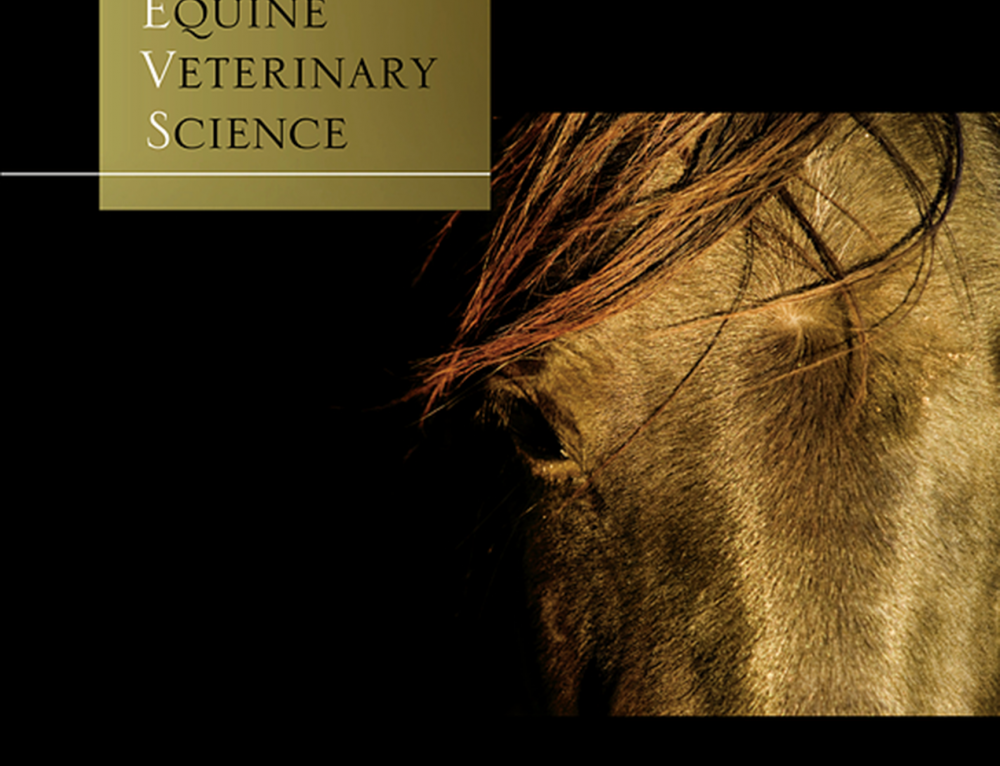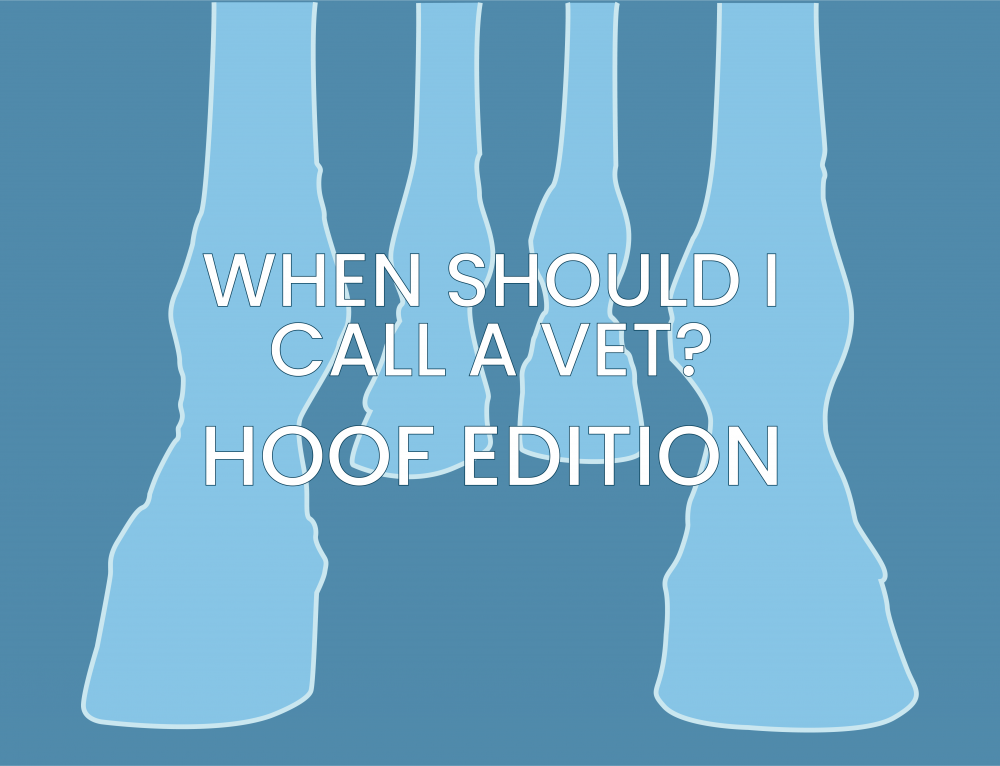
DEHYDRATION
A consequence of fluid loss, dehydration can affect your horse year-round, but remains more prevalent during Summer when fluid loss from sweating exceeds a horse’s intake through drinking.
Dehydration is much more than your horse just being thirsty. Dehydration can result in other health problems, such as impaction colic due to the faeces becoming abnormally dry in the large intestine.
The clinical signs of dehydration you might see in your horse can include lethargy, dry and tacky mucous membranes and “sunken” looking eyes. However it is a good idea to monitor your horse for signs of dehydration long before it reaches this point, the easiest way to do this is to use the skin-pinch test: Grab a fold of skin on the point of the shoulder and pull it away from your horse. Let the skin go and count the seconds until it is flat again. In an adequately hydrated horse, it will snap back in one or two seconds. Any longer may be an indication of dehydration, although this can vary so it is a good idea to learn what is normal for your horse.
Prevention: Make sure your horse always has fresh water available, including before and after exercise and when travelling. You can add electrolytes to your horse’s water in hot weather but make sure to offer a second bucket of plain water, so he has the option to drink that as well. Adding a sprinkle of table salt onto his feed or providing a salt lick may encourage your horse to drink more during the warmer months. In addition, soaking hay and wetting feed can also help to increase his daily water intake. You may also encourage your horse to drink by flavouring his water with a splash of apple juice. If your horse appears dehydrated and resists all your efforts to entice him to drink, call your veterinarian for treatment.
HEAT STRESS
Horses are built to hold heat to stay warm in cold weather. While this serves a horse well in the winter, during the hot and humid summer months it can cause his internal body temperature to rise quickly, especially when he exerts himself. The horse’s body has several mechanisms in place to maintain a normal body temperature, for example, heat evaporates from the lungs and also from the skin through sweating. In hot, humid temperatures, however, when the ambient temperature is the same or higher than the horse’s body temperature, a horse’s normal cooling mechanisms become ineffective.
Signs of equine heat exertional illness or ‘heat stress’ include profuse sweating, muscle weakness, panic, rapid breathing and an elevated heart rate. This can progress to incoordination, depression and disorientation. Left untreated heat stress can result in endotoxemia, convulsions, loss of consciousness and death.
How to treat: If you are concerned your horse may be showing any signs of heat stress stop working him immediately. Keep him in the shade and offer cool water. Remove all tack, including bandages and boots immediately and hose him down with cold water and scrape it off to facilitate cooling by evaporation. If your horse continues to pant or blow, it is a good idea to walk him slowly in the shade for a few minutes before repeating the hosing and scraping. In extreme cases you can apply ice packs to his face and throat; places where blood vessels run close to the surface of the skin and can be cooled. If the horse doesn’t recover within a few minutes or goes down, call your veterinarian. Heat stress is an emergency and can be fatal; immediate steps must be taken to reduce the internal body temperature of the horse.
Prevention: Avoid working your horse hard in very hot weather and if possible, exercise him in the mornings and evenings when it is cooler. Horses that are unconditioned, overweight or dehydrated are most susceptible. So, as summer is approaching gradually build up your horses’ fitness, adjust his diet to maintain a healthy weight and ensure access to clean, fresh water at all times.
ANHYDROSIS
Anhidrosis is the inability to sweat. The exact cause is still unknown, but it’s thought to be related to prolonged stimulation of the sweat glands, particularly in very hot, humid conditions. This causes the horse’s thermoregulatory system to essentially shut down. Anhidrosis can occur in any age, breed or sex of horse, can be acute or gradual in onset and usually begins in the spring or summer. Affected horses can have poor stamina and fatigue easily. As they cannot sweat, they can quickly develop heat stress and collapse during warm weather or exercise.
You may be able to catch the condition early if you notice your horse is sweating less than he used to. Consult your veterinarian for a diagnosis.
How to treat: There is no proven cure for anhidrosis, moving an anhidrotic horse permanently to a cooler climate is the only known successful approach and many horses will start sweating again once moved to a cooler environment. Various supplements and medications have been used in an attempt to treat the condition although none appear to improve anhidrosis when evaluated critically and research is still ongoing in this area.
Anhidrosis is a very difficult condition to treat and full recovery is rare if the horse remains in the hot, humid environment.
How to manage: If you can’t move an anhidrotic horse, you’ll need to keep him as cool as possible during the summer months and avoid any riding during the heat of the day. Affected horses should be housed in cool environments such as an air-conditioned stable and adequate shade provided for paddocked horses.
SUNBURN
Just like humans, sunburn in horses is the burning of the skin due to overexposure to UV radiation from the sun. Dark skin is protected by the pigment melanin, and in addition your horse’s hair coat offers some protection, but pink skin with little or no hair, for instance around the muzzle, is most susceptible to burning.
Sunburnt skin in horses is red, painful and swollen. In advanced cases, the skin may crack and ooze. Extensive, painful scabbing of the skin is more likely to be caused by photosensitization, which is described below and is a different pathological process.
How to treat: If your horse has sunburn, keep him in the shade and treat the area with a soothing cream or after-sun balm. If the sunburn doesn’t improve significantly within a few days, call your veterinarian.
Prevention: You can prevent sunburn by shielding vulnerable areas of skin from sunlight. You can do this with sun-blocking gear such as a UV filtering face mask. Many of these protective masks also incorporate nose flaps to cover pink muzzles. You may want to shield your horse’s skin from overexposure with a light rug. You should apply a thick coating of zinc oxide or Sun cream to any exposed pink areas such as the muzzle. Pink areas exposed to UV radiation are also at an increased risk of some types of skin cancer; monitor any pink areas around eyes, muzzles and genitals for changes in the skin colour or lumps and bumps and call your vet if you are concerned.
PHOTOSENSITISATION
Photosensitisation is commonly confused with sunburn but is potentially much more serious. Primary photosensitization occurs when a horse eats plants containing a compound that reacts to ultraviolet (UV) light from the sun. When these compounds circulate in the blood system near the surface of unpigmented skin it causes a chemical reaction which results in damage to these areas of skin. In secondary photosensitization, the horse cannot break down the normal circulating levels of photodynamic compounds from plants, due to liver damage, this leads to the same reaction.
Photosensitization results in painful blistering of the skin, followed by the formation of tight, crusty scabs. These will appear on the pink skin under white markings, such as on the face and legs. Over time the scabs will slough off.
Treatment: Start by protecting your horse from sunlight. If his entire body is affected, have him spend his days in a shady stable or yard. If the blistering is limited to his lower limbs you can use wraps to shield them from the light. A UV-blocking fly mask with a nose flap should be used if his face or muzzle are affected. The scabs are painful and should be left alone to slough off naturally. If the scabbing is extensive or your horse seems otherwise unwell, call your veterinarian, who may prescribe medications for the pain and inflammation.
Address the cause: Check your horses’ pasture for plants that cause photosensitivity, such as alsike clover, buckwheat, perennial ryegrass or St. John’s wort. Your veterinarian may also want to check your horse has normal liver function with a blood test.
QUEENSLAND ITCH
Queensland itch (also called sweet itch) is an allergic reaction to proteins in the saliva of small biting midges (Culicoides spp.). The allergic reaction can occur anywhere on a horse’s body but is usually seen in the areas where the midges commonly bite; around the roots of the mane and the withers and around the tail head. The local reaction results in an intense itchiness, which can cause the horse to obsessively rub so much he damages the skin causing crusty, inflamed, hairless patches of skin on the affected areas. Certain breeds do seem to be more genetically susceptible, including British breeds of horse such as Welsh Ponies and Clydesdales.
Treatment: Treatment and prevention relies on shielding the horse as much as you can from the midges. A wide variety of fly-proof garments including masks and rugs are available which can help protect your horse. Fly sprays also help, but make sure they are repellents and not just insecticides, which only kill after the flies have already bitten. You can also adjust the turnout schedule to keep your horse indoors at dawn and dusk, when the midges are most actively feeding.
If management changes alone don’t seem to be helping your horse, make an appointment with your veterinarian to discuss other options. Medications such as corticosteroid shampoos, creams and injections can help stop the inflammatory reaction and make your horse more comfortable.
ALLERGIES
Common allergens of horses can be widely divided into three groups:
- Skin allergens e.g. midge bites or shampoos.
- Respiratory allergens to airborne particles e.g. dust and pollen.
- Ingested allergens e.g. certain forage, foods and plants.
Allergic reactions can be anything from mild to life-threatening although thankfully anaphylactic reactions are extremely rare in horses. Weeds and grasses, along with insects, cause the most trouble for horses so allergies are often seasonal, depending on which insects are active and what plants are blooming.
When your horse has an allergic reaction, his immune system perceives a threat from something relatively harmless and mounts a response against the “threat”. This reaction can instead, damage the horse’s own body tissues. Additionally, he can become ‘hypersensitive’ to that specific allergen so the next time he’s exposed to it, the reaction is likely to be quicker and stronger. This reaction can look like excessive coughing and nasal discharge for respiratory allergens or raised itchy areas of skin varying from a small localized reaction up to huge welts over the whole horse.
How to manage: Allergies are generally not curable, but they are manageable by keeping horses away from the allergen or protecting them from it. For example, protection from insect bites with barriers like rugs or fly repellent may help. Washing can be used to remove contact allergens from the skin and a horse with a dust/mould allergy could be kept in a grassy paddock instead of a dusty stable.
If the reaction becomes very severe or itchy, then veterinary attention may be required to supply anti-inflammatory medications.
CONJUNCTIVITIS
Conjunctivitis is swelling of the membranes around a horse’s eye, caused by an infection. It occurs when trauma to those tissues opens the way for bacterial invasion. In summer windblown dust or flies can cause irritation causing the horse to rub his eyes, leading to bacterial invasion of the sensitive membranes around the eye resulting in conjunctivitis. Unlike pinkeye in people and cattle, conjunctivitis in horses is not contagious.
A horse with conjunctivitis has swollen eyelids, often with angry-looking pink or red membranes protruding through the lids. There may also be a discharge from the eye varying from clear and watery to a thicker yellow or white discharge. If you open the lids, you’ll see a normal, clear globe below. This is important to help distinguish conjunctivitis from other, much more serious ocular conditions such as uveitis, corneal ulcers or fungal infections. Likewise, a horse with conjunctivitis won’t be sensitive to light, whereas a horse with a more serious eye condition likely will be.
Prevention: The best prevention for conjunctivitis is a well-fitted fly mask. Not only will this keep insects away, but it will cut down on the dust that blows into your horse’s eyes.
Treatment: If your horse does develop conjunctivitis, the treatment is a topical antibiotic eye ointment, which your veterinarian can prescribe. A visit will likely be required to verify it is just a simple conjunctivitis and not something much more serious as other eye conditions can deteriorate rapidly if not treated promptly.
BRUISED HOOVES
Like your own skin, a hoof can bruise in response to trauma causing blood vessels within the hoof capsule to rupture. You may even see bruises at the time of trimming on a newly pared hoof. In summertime, hoof bruises are most commonly caused by working the horse on hard, dry and stony ground or from repeated leg stamping in response to flies.
A horse with hoof bruising is likely to be “footsore” or lame, particularly on firm footings. Your horse may start taking shorter strides or will be reluctant to walk on certain surfaces. If the hoof capsule cracks and bacteria enter, a bruise can turn into an abscess, and the horse will become dramatically lame. Fluctuations between wet and dry conditions in summer can further exacerbate these problems.
Prevention: Keep it slow on hard or stony ground. Hard, compacted ground isn’t just a problem for hooves, it can cause of a multitude of lameness issues for horses as it causes concussive stress and strain on bones, joints and ligaments. If possible, ride on a specially prepared arena instead.
In addition, make sure he has adequate fly protection in the paddock to keep him comfortable. It may even be worth shortening his summer trimming/shoeing schedule to keep his hooves in top condition and minimise the chances of him losing a shoe or feet becoming overgrown or cracked. If your horse is still having trouble with his hooves, you could explore some other options, such as pads, synthetic or glue-on shoes and other state-of-the-art products.
Treatment: Generally, treatment may involve the application of a poultice and administering pain relief. Rest your horse until the soreness resolves, this usually only takes a few days, though a deep bruise could affect the horse for longer.
FIRE
When designing a bushfire survival plan for your family, house and property remember to include your animals. There are excellent guides to help with bushfire survival planning on government websites. Have an emergency pack prepared including a first aid kit for your horses and spare halters and ropes. Think carefully and seriously about whether it would be possible to move your horses in an emergency and also have a contingency plan if it is unsafe to move your horses. If you must leave your horses on your property prepare them by removing all gear from your horse: plastic melts, metal heats up and rugs catch on fire. Leave them in areas with minimal vegetation and if possible, with access to dams. Secure internal gates open and do not put horses in confined areas such as stables, or small yards. Your horse should be familiar with the area including the location of water, feed, gateways and any other horses.
Treatment: In the immediate post bushfire period, it is essential to assess your horse for injuries. It is important to keep your horse comfortable and well-hydrated to assist with its recuperation. Vets may not be able to get to you for some time due to road closures and workload, so the initial care might be your responsibility. Skin burns produce severe inflammation with heat, pain and swelling. Initial first aid must be anti-inflammatory, including cold hosing of burnt skin and pain relief.
A common cause of death in fires and in the days afterward is complications from smoke inhalation, this can cause lung damage which may not be immediately obvious. In addition, it is also important to move your horse from hot ground as soon as possible; prolonged exposure will cause overheating of the hooves and this can develop into laminitis. Horses that display signs of laboured breathing, soot stained discharge from the nose, elevated body temperature, lameness, extensive burns or burns around the eyes and muzzle need urgent veterinary treatment.






